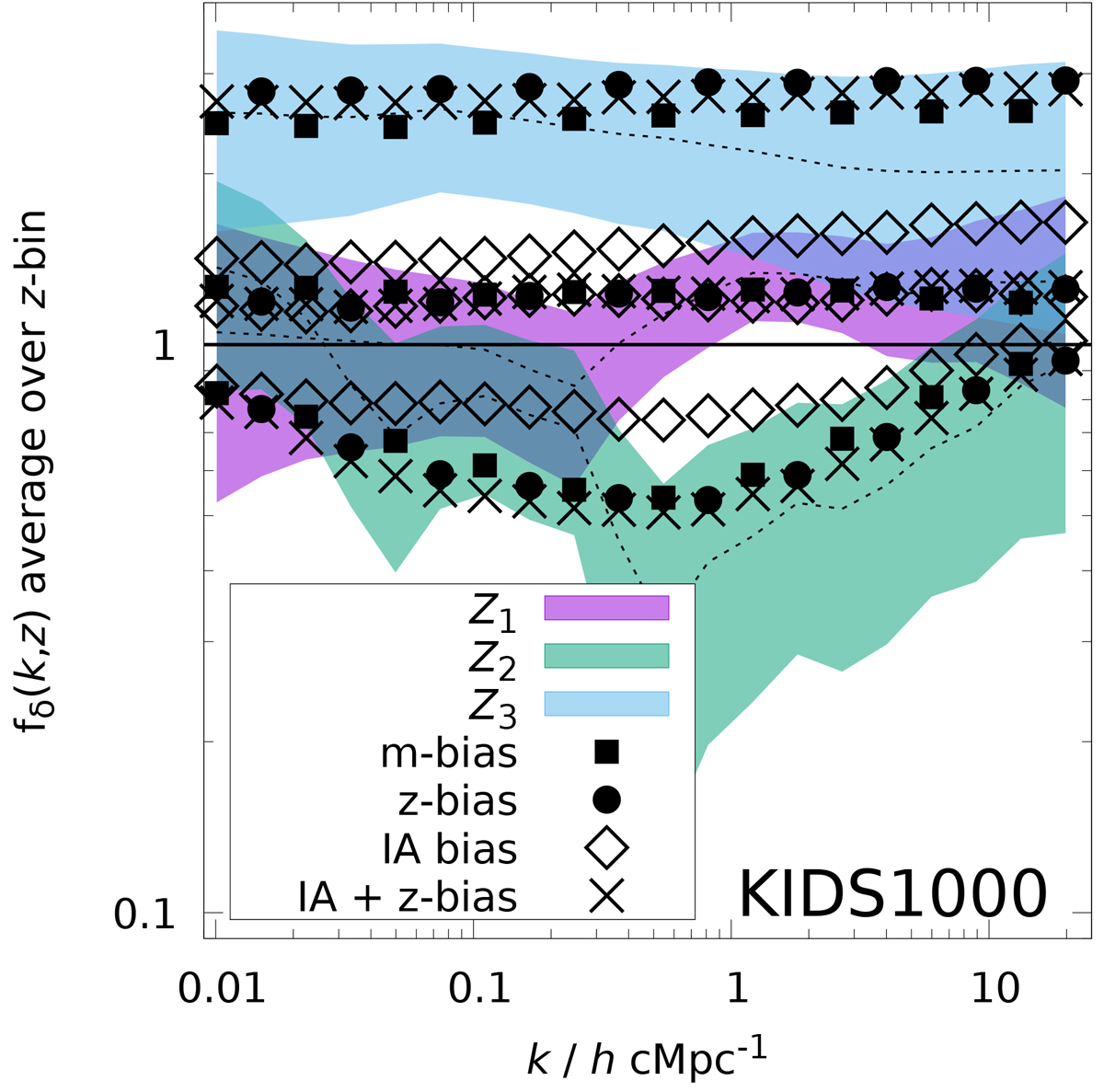Fig. 9.

Download original image
KiDS-1000 results for fδ, mn, as in the middle panel of Fig. 4, in relation to alternative hypotheses using the reference cosmology Pδfid(k, z) and best-fitting bias parameters to match the KiDS-1000 data vector, ξ±(ij)(θ). The filled squares assume shear m-bias factors {mi}={+1.00, +0.48, −0.023, −0.028, +0.035}, the filled circles assume photo-z biases {δzi}={−0.075, −0.079, +0.009, +0.018, −0.052}, and the open diamonds employ the eNLA model with {AIA′,zpiv, η}={0.3, 0.19, 1.5}. The crosses assume a hybrid model of eNLA and a smaller z-bias: {AIA′,zpiv, η}={0.45, 0.25, 2.3} and {δzi}={−0.017, −0.058, +0.027, +0.025, −0.043}. The data points indicate the posterior median (CIs are similar to those of the shaded regions); the filled data points use alternating k-bins to avoid overlap.
Current usage metrics show cumulative count of Article Views (full-text article views including HTML views, PDF and ePub downloads, according to the available data) and Abstracts Views on Vision4Press platform.
Data correspond to usage on the plateform after 2015. The current usage metrics is available 48-96 hours after online publication and is updated daily on week days.
Initial download of the metrics may take a while.


